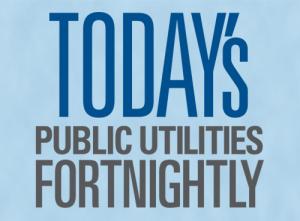This is Getting Very Interesting. What is Happening to Electric Sales?

This is getting very interesting, indeed. The latest data for electric sales nationally, through July, came in last week. And guess what? It’s happened again. We have now set the all-time record high for residential electric sales in the first seven months of the year. Just as we had for the first six months of the year, as this column reported last month.
After residential sales peaked in 2010 and 2011, they have fallen a bit and been sluggish a lot in the last half dozen years. There was a temporary resurgence in 2014 and 2015, but then sales fell in 2016 and further in 2017.
Residential sales seemed destined for zero growth. In the years 2007, 2008, 2009, 2012, 2013, 2016 and 2017, American households used 795.1 to 809.6 million megawatt-hours in the seven months of January through July. That’s a rather narrow range.
Only in 2010 and 2011 and in 2014 and 2015 did residential sales spike up. In the former two years to 847.2 and 842.2 million megawatt-hours. And in the latter two years to 832.3 and 830.5 million megawatt-hours. Otherwise, sales were stubbornly stuck in that narrow 795.1 to 809.6 million megawatt-hour range.
With the large sales growth this year, we have to wonder if we’re seeing a reversal of this trend.
Last year, in the first seven months of 2017, residential electric sales were 795.1 million megawatt-hours. This year, in the first seven months of 2018, residential sales were 849 million megawatt-hours. That’s an ample increase of 6.8 percent.
Could this year – when all is said and done – have the highest residential sales ever? It’s possible given sales in the last five months of the year. In all but one of the previous seven years, 2011 through 2017, residential sales in the last five months of the year came in the narrow range of 573.6 to 583.7 million megawatt-hours. The top of this range notably took place in the last five months of last year, 2017.
Or it’s possible this is 2010 all over again, and the jump up is again temporary. The residential sales increase from 2009 to 2010 was 6.5 percent, almost as great the 6.8 percent increase from 2017 to 2018.
Today, an assist to a group pulling together young people up-and-coming in our industry:
emPOWER is a non-traditional conference bringing together young clean energy professionals across the public, private, and non-profit sectors. In convening some of the most prominent voices in clean energy leadership, the sessions and workshops at emPOWER will focus on the development and enablement of a diverse, inclusive, and passionate community of future leaders to advance innovative clean energy solutions. Attendees should prepare to feel challenged, inspired, and motivated to tackle the multifaceted issues in a changing energy landscape.
When: October 25, 2018, 8 a.m. – 7 p.m.
Where: Sidney Harman Hall, 610 F Street, NW, Washington, DC.
Contact: empower@cleanenergyleaders.org
More info: www.celiempower.com
Steve Mitnick, Editor-in-Chief, Public Utilities Fortnightly, and President, Lines Up, Inc.
E-mail me: mitnick@fortnightly.com



